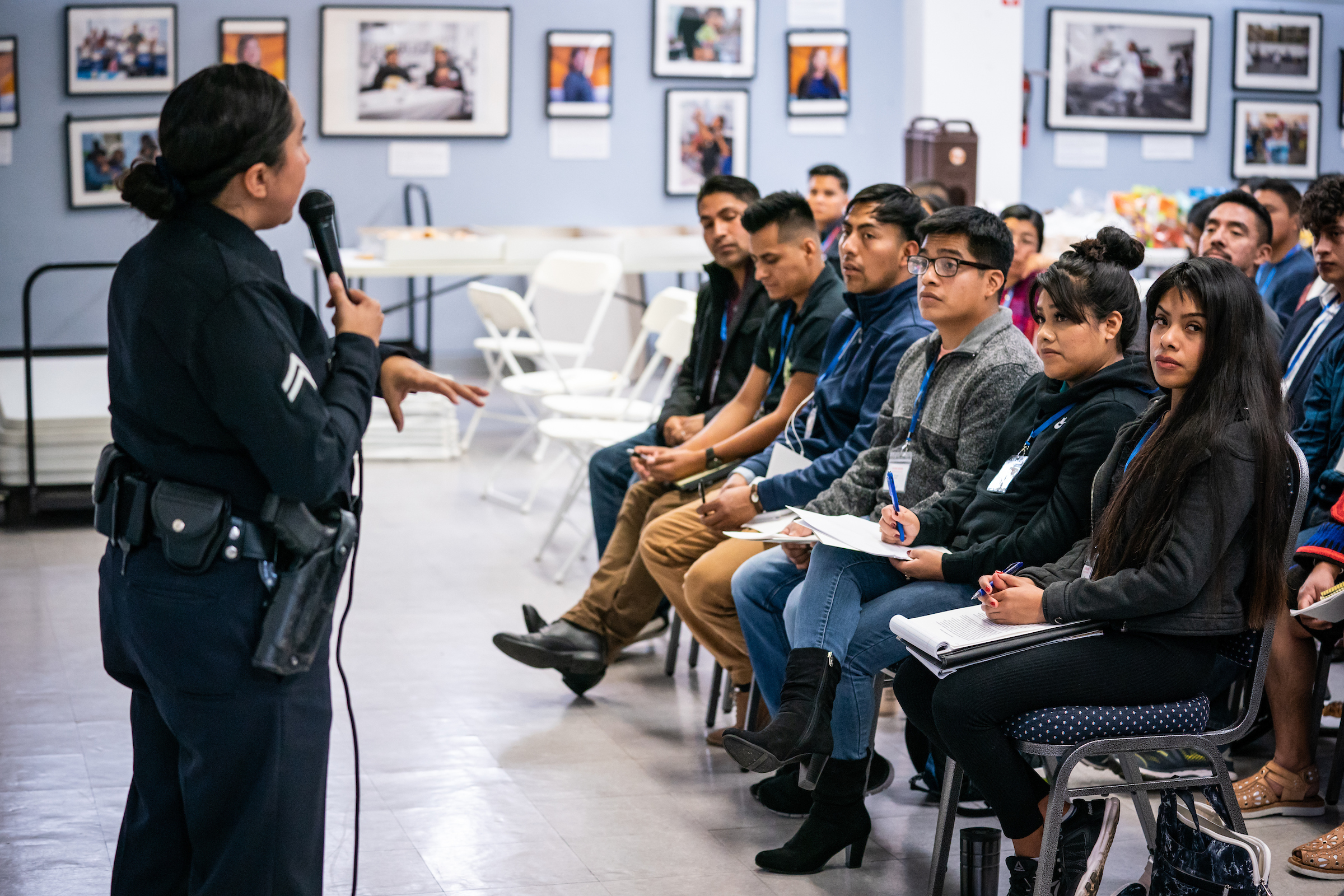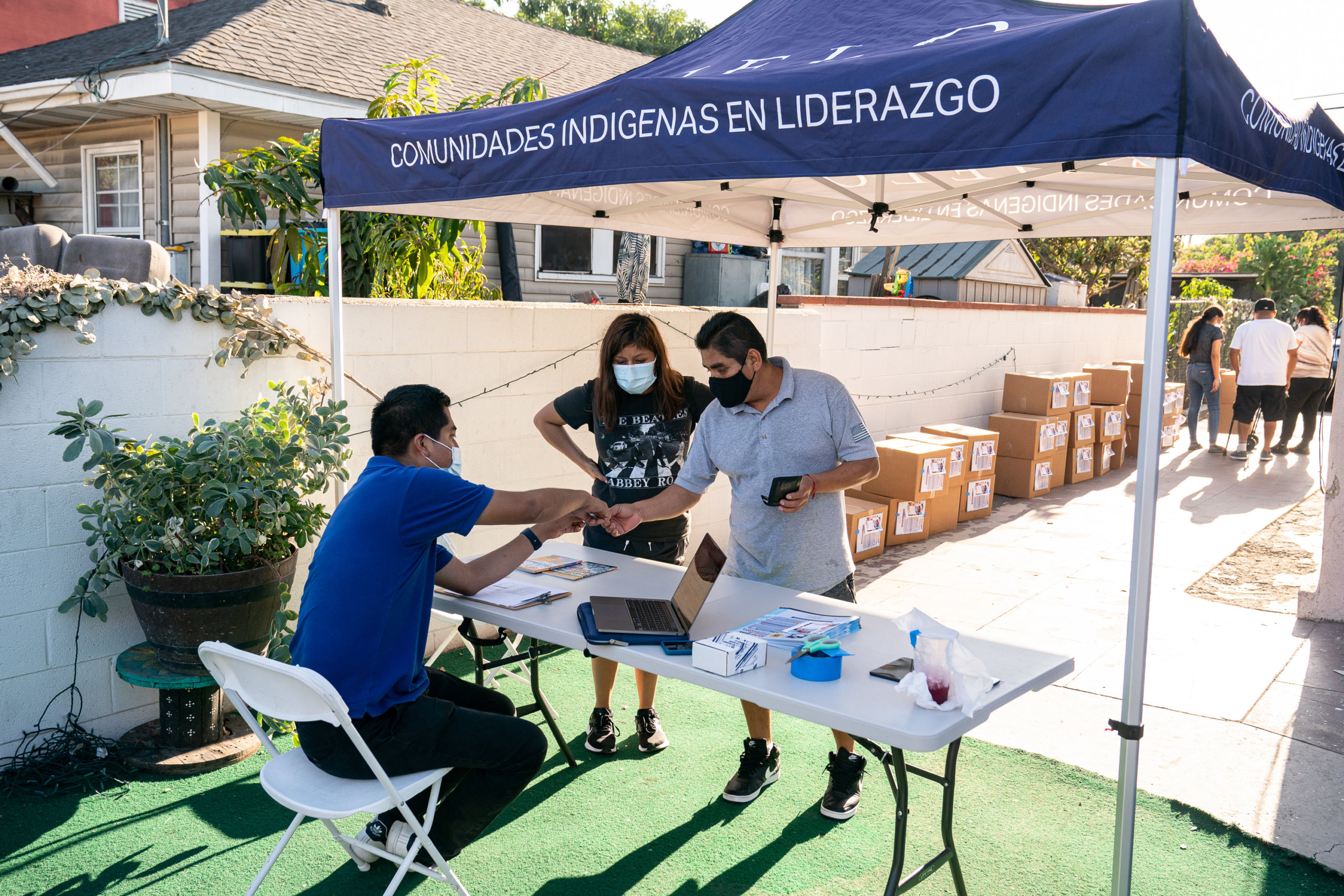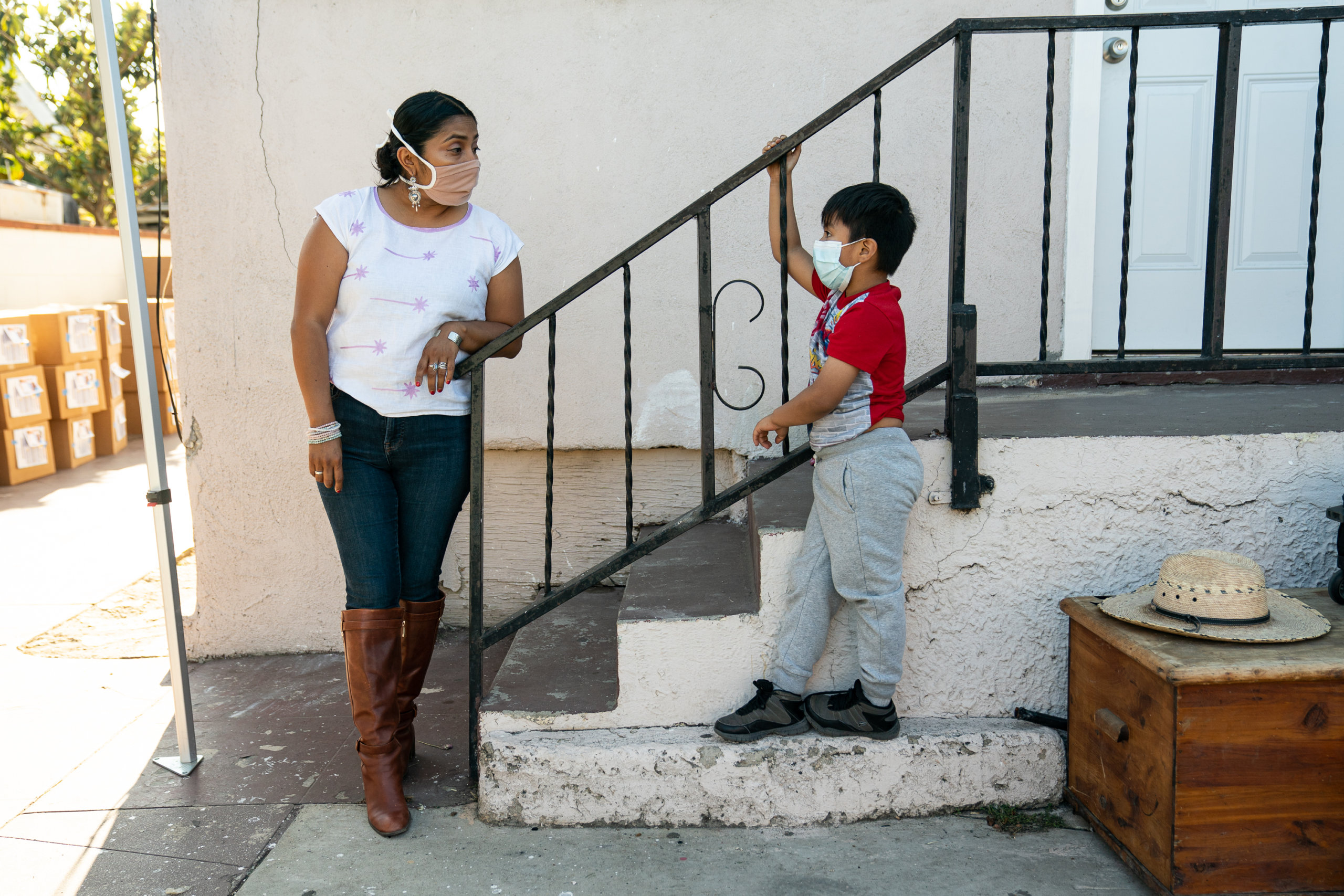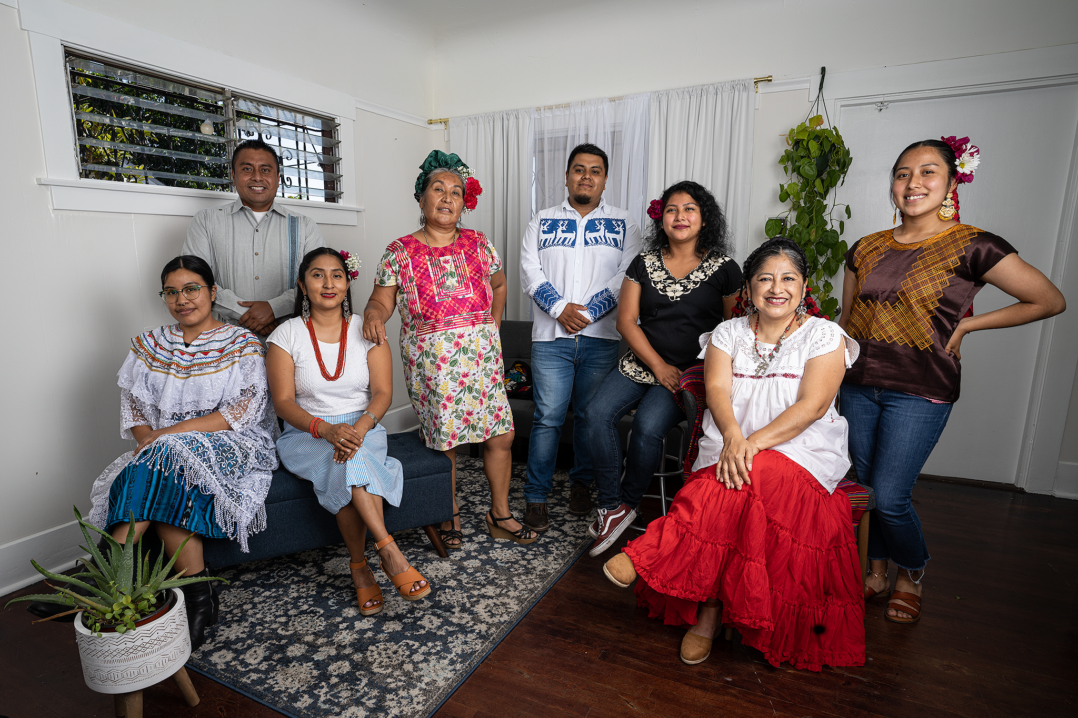Q&A: Zapotec Activist Odilia Romero Migrated from Mexico as a Child, but Never Called Herself Latina. Here are Her Suggestions for Teaching Indigenous Identity.
When Odilia Romero arrived as a 10-year-old to the Los Angeles Public School District 40 years ago from her San Bartolome Zoogocho Oaxaca community in Mexico, she fell behind in school. No one knew how to address the needs of an Indigenous child from south of a colonial border who didn’t speak one of two colonial languages – English or Spanish. Today, she is the co-founder and executive director of Comunidades Indigenas en Liderazgo (CIELO), an Indigenous, women-led organization focused on promotion of Indigenous rights and upper mobility, and on simply reminding the American public Natives are not a relic of history, they are living beings. And just because they were born in what is now Latin America or into families who came from there, or just because many in the region have mixed ancestry, doesn’t necessarily those coming from Native communities identify as Latino. For Indigenous Peoples Day, ProgressReport.co sought an interview with Romero to find out how UnidosUS can help educate its constituents and improve on the educational policies needed to improve diversity and inclusion for both Latinos and Indigenous people alike.

Q. Can you tell us about CIELO’s main programs and how they uplift children and improve the outlook of life for Indigenous families?
A. CIELO was founded by two Zapotec women in 2016: myself and Janet Martinez and me. It is an Indigenous women-led, intergenerational organization that is combating racism towards Indigenous people by bringing visibility and resources to the Indigenous migrant communities. CIELO creates substantive solutions to the social, economic, and cultural challenges faced by the Indigenous community. We work on language revitalization by creating new spaces of engagement with Indigenous languages for younger generations. An example of this work is Weaving Words and Rhymes which celebrates Indigenous languages through music. CIELO also organized the first Indigenous literature conference by and for Indigenous communities in Los Angeles. Our most unique endeavors are our ongoing work with the Los Angeles Police Department (LAPD) to create a dialogue and awareness of indigenous communities residing in Los Angeles by conducting cultural awareness training with police officers.

The unprecedented COVID-19 pandemic has had disproportionate effects on the undocumented Indigenous people. CIELO created the Undocu-Indigenous fund to specifically address these challenges by allocating resources to support the well-being of Indigenous undocumented communities in Los Angeles. Our goal is to reach out to the Indigenous communities in Los Angeles and allocate these funds to Indigenous communities during this pandemic. From the onset of the pandemic to January 2021, we have given 2.2 million dollars in COVID relief funds.
We have 13 staff members and only four of them are men. We have our Center for Indigenous Language and Power (CILP) where we do training to creates upper mobility for indigenous people. It gives them an opportunity to have a new career as an interpreter in the courts, the hospitals, and schools. We train them, but we also lead cultural awareness training to teach, educate, and inform non-indigenous people of our existence as indigenous peoples. That includes educating our Latinx relatives about the dangers of the Latinx, Hispanic, Mexican, Guatemalan and other labels given to us as Indigenous peoples.
Once there’s an assumption that we’re all Latinos, which we’re not, people assume that we speak Spanish. That assumption has a negative domino effect on our lives. When you enter school in the United States, there’s an assumption that you speak Spanish, never realizing that you actually speak an Indigenous language so you fall behind. I myself fell behind as a student. Back then, there weren’t very many of us in the school system, but today, there are hundreds of thousands, and we don’t know about these labels of Latinx, Hispanic when we arrive here. I’m just Odilia from Zoogocho. I’m not a Latina, I’m not a Mexican, I’m not a Oaxacan, I’m not Zapotec, but Odilia from Zoogocho.
Q. Can you talk more about the domino effect these assumptions and this mislabeling can have on Indigenous families?
A. This can have deadly implications. If there’s an assumption that I speak Spanish, and they tell me how to get my child on medication, and then I don’t give the child the right dose, that’s child endangerment. The child could get taken away by the Department of Children and Families, I might end up in court, and get diagnosed with a mental illness, depression, or as an unfit parent. But it’s not that. It’s that the instructions for administering the medication were never given to me in my language. I’ve seen so many procedures where Indigenous people have been asked to sign a consent form in Spanish without knowing what they’re signing.

Q. These are really concerning scenarios, and this is not the first time you’ve discussed them with UnidosUS. In fact, you’ve collaborated on other presentations with Anthropologist and UnidosUS Deputy Director of Research Patricia Foxen to consider various ways of exploring data and policymaking that can improve solidarity with and outcomes for Indigenous peoples hailing from Latin America.
A. One is getting informed about our existence as Indigenous people, and making sure that educators and service providers don’t think of us as if we existed, right? It’s so constant that we were taught like about like relics of the past. For example, non-Indigenous people talk about the Zapotec as these creators of these ruins of Monte Albán. Those are ceremonial sites for us, not ruins so just understanding the power of language and the words we use. Using words like ruins is a very clear indication that they thought less of us as a people.
Q. And there are so many different communities and cultures identifying as Indigenous in the Americas today.

A. Mexico alone has 68 Indigenous language families and 364 Indigenous languages spoken, and those are just the numbers the Mexican government gives. That diversity of language is so beautiful. You can begin to appreciate this diversity by learning about your own country of origin. If you’re from Mexico or El Salvador or Colombia, find out what Indigenous people lived there before the colonizers and are still there.
After that, you can think about how to be an ally, especially with children in the classroom. If you start talking about Indigenous languages and cultures to your students, a kid might come up to you and say “hey, we speak that in my family, I speak that language.” And if you talk about Tecum, for example, somewhere there’s a kid with that last name in a classroom in the United States.
Q. So then as we start to raise these questions of identity and labeling in the classroom, and we help our students, especially ones in the higher grades, to understand how labels impact policymaking, how might we transition this to a conversation around the purpose and the challenges of the U.S. Census?
A. This becomes very complicated because right now, we have no choice of how to identify in such paperwork. Ask my mom “are you Latina?” She’ll say yeah, that’s fine. Whatever. But at the end of the day it’s because there’s no room for us to put a box that fits us. The Census doesn’t reflect accurately the existence of Indigenous people coming from south of the U.S.-Mexico border.
Numbers are important. Data is important. If we don’t have data, we don’t exist, and if we don’t exist, there are no services, no language supports, and it becomes a human rights violation against Indigenous people. That’s why here in Los Angeles where we do our work, we’ve created a map of Indigenous communities to educate people.
Q. So if you were to change the U.S. Census to improve policies and services for Indigenous peoples, to improve supports for Indigenous children in the classroom, how would you go about that?
A. It’s impossible to put every single group because there would have to be more than 20 pages, but I would ask what is your first language— Zapotec, Yuruba? Then the census might be able to get a more accurate count of the languages spoken in the united states .
Q. We know the U.S. school system doesn’t have the diverse representation or cultural competency it currently needs to address for racism and discrimination in education and the teaching of history. The UnidosUS education policy team is actively working to change that. But it also happens with sharing ideas among educators and asking organizations like yours for advice. How can a teacher or a school leader work with CIELO and other groups to better understand and teach Indigenous issues?
A. CIELO has different communities events that you can attend or bring students to our offices if you’re in Los Angeles County, and there are in-person and on-line cultural trainings to help identify languages and then work with Indigenous communities. We also have a network across the United States but so far it only has five nonprofits that are led by indigenous women. Those include our organization, CIELO in Los Angeles, Voces del Los Pueblos in New York, Centro Biracial Para El Desarrollo Indigena Oaxaqueño (CBDIO) in Oxnard, California, the Mixeteco Indigena Community Organizing Project (MICOP), and the Mayan League in Washington, DC.
Q. That sounds like a great starting place for educators and community leaders to begin to develop their awareness of who’s in their vicinity. The UnidosUS Affiliate network can also be helpful. For example, our Affiliate the Redlands Christian Migrant Association works with a lot of Indigenous farmworker families coming from Mexico and Central America, and they also partner with an organization in South Florida called the Guatemalan Mayan Center. What other steps or resources should these educators and leaders consider in identifying Indigenous people living in their community and helping to address their needs? Local immigrant rights groups and their translators? Local churches?
A. It’s all about getting to know the neighborhoods you serve, meeting those kids in your classroom, just doing the homework of talking to your community. But here are some ideas:
- If there is a new student in your classroom, do notassume that child’s first language is Spanish, ask as what pueblo, aldea are they coming from.
- Have a map of languages in your classroom so that when the child tells you something like “my pueblo is Zoogocho, you can go look at your map and know its Zapotec/Disha Xhon.
- Partner with indigenous-led organizations in your area.
- Learn about indigenous communities from the United States and Latin America. Learn about their struggles and the roots of their displacement because a child might not be able to tell you.
- Learn about indigenous sheroes and land defenders so that you can understand the impact of things like mining and palm oil production in indigenous communities.
- Know that no one leaves home by choice. Go to your family’s migrant stories because unless you are a Native American, such as a Hopi, Cherokee, Choctaw, or Tongva, you have a migrant story even if we have been here for generations.
-This interview was conducted and edited by UnidosUS Senior Web Content Manager and ProgressReport.co Editor Julienne Gage.

